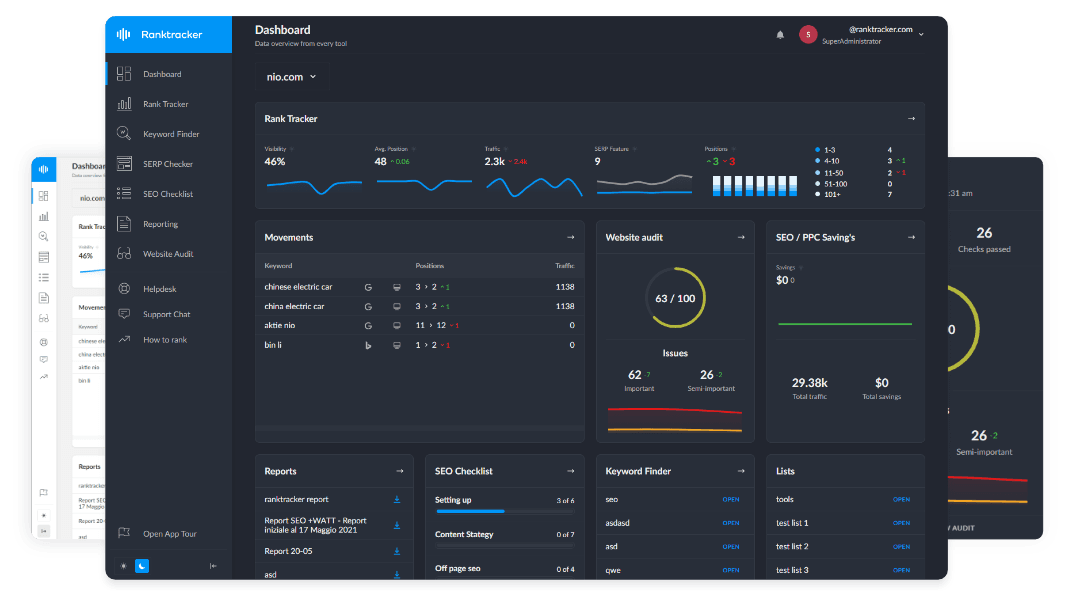Intro
In Semantic SEO, attributes define the characteristics of an entity, helping search engines interpret content contextually. Google’s Knowledge Graph, schema markup, and NLP algorithms rely on well-defined attributes to understand search intent and entity relationships.
Attributes enhance search visibility, featured snippet eligibility, and overall topical relevance. Below are the core types of attributes used in Semantic SEO.
1. Entity-Based Attributes
These attributes describe real-world entities, including brands, people, places, and concepts.
Examples:
- Brand Attributes: Company name, industry, product offerings (e.g., "Ranktracker – SEO Tool")
- Person Attributes: Name, profession, expertise (e.g., "Elon Musk – CEO of Tesla, SpaceX")
- Location Attributes: City, country, coordinates (e.g., "Eiffel Tower – Paris, France")
How to Optimize:
- Use Google’s Knowledge Graph API to find entity-related attributes.
- Implement schema markup (Organization, Person, LocalBusiness).
2. Descriptive Attributes
These attributes define specific qualities, characteristics, or properties of an entity.
Examples:
- Product Attributes: Features, specifications, pricing (e.g., "Ranktracker – Includes SERP Checker, Keyword Finder")
- Event Attributes: Date, time, location (e.g., "Google I/O 2025 – May 14-16, San Francisco")
- Content Attributes: Title, author, published date (e.g., "SEO Guide by Ranktracker, Published on March 2025")
How to Optimize:
- Use Product, Event, and Article Schema Markup for better search appearance.
- Ensure consistent and structured descriptions across your website.
3. Structural Attributes
These attributes help organize data for search engines, enabling them to categorize and process information correctly.
Examples:
- Heading Attributes (H1-H6): Define content hierarchy.
- Alt Text for Images: Helps search engines understand visual content.
- Internal Linking Structure: Defines page relationships and site architecture.
How to Optimize:
- Use proper HTML structure (H1 for main title, H2-H6 for subsections).
- Optimize alt text with relevant descriptions.
- Implement contextual internal linking for better topic clustering.
4. Contextual Attributes
These attributes help search engines understand the intent and meaning behind words.
Examples:
- Synonyms and Variants: Helps with NLP understanding (e.g., "SEO tool" vs. "search optimization software").
- Sentiment Analysis: Google analyzes positive/negative context in reviews and content.
- Keyword Relationships: LSI (Latent Semantic Indexing) keywords improve content relevance.
How to Optimize:
- Use related keywords and natural language variations.
- Write context-rich, intent-focused content.
- Monitor Google NLP analysis to refine tone and meaning.
5. Metadata Attributes
These attributes define how content appears in search results and social media.
Examples:
- Title Tags: The clickable headline in SERPs.
- Meta Descriptions: Short summaries displayed under the title.
- Open Graph & Twitter Cards: Control social media previews.
How to Optimize:
- Write compelling, keyword-optimized title tags under 60 characters.
- Craft meta descriptions that encourage clicks (120-160 characters).
- Use OG/Twitter meta tags for better visibility on social media.
6. Behavioral Attributes
These attributes define how users interact with a website, influencing search rankings.
Examples:
- Bounce Rate: Percentage of visitors who leave without interacting.
- Dwell Time: How long users stay on a page.
- Click-Through Rate (CTR): Percentage of users clicking on a result.
How to Optimize:
- Improve page load speed and mobile experience.
- Write engaging, in-depth content that answers queries.
- Use clear CTAs (Call-To-Actions) to increase engagement.
Conclusion: Attributes as a Pillar of Semantic SEO
Attributes play a vital role in how search engines interpret, rank, and display content. By optimizing entity-based, descriptive, structural, contextual, metadata, and behavioral attributes, you enhance your Semantic SEO strategy and improve search rankings.
For more advanced SEO insights, check out Ranktracker’s SEO tools and stay ahead of search trends!

